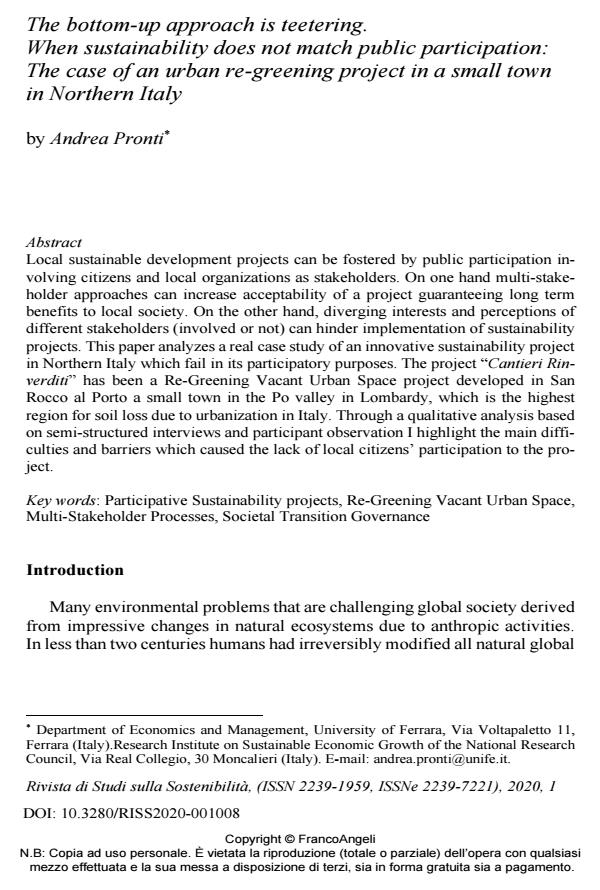The bottom-up approach is teetering. When sustainability does not match public participation: The case of an urban re-greening project in a small town in Northern Italy
Journal title RIVISTA DI STUDI SULLA SOSTENIBILITA'
Author/s Andrea Pronti
Publishing Year 2020 Issue 2020/1
Language English Pages 29 P. 129-157 File size 415 KB
DOI 10.3280/RISS2020-001008
DOI is like a bar code for intellectual property: to have more infomation
click here
Below, you can see the article first page
If you want to buy this article in PDF format, you can do it, following the instructions to buy download credits

FrancoAngeli is member of Publishers International Linking Association, Inc (PILA), a not-for-profit association which run the CrossRef service enabling links to and from online scholarly content.
Local sustainable development projects can be fostered by public participation involving citizens and local organizations as stakeholders. On one hand multi-stakeholder approaches can increase acceptability of a project guaranteeing long term benefits to local society. On the other hand, diverging interests and percep-tions of different stakeholders (involved or not) can hinder implementation of sus-tainability projects. This paper analyzes a real case study of an innovative sus-tainability project in Northern Italy which fail in its participatory purposes. The project "Cantieri Rinverditi" has been a Re-Greening Vacant Urban Space project developed in San Rocco al Porto a small town in the Po valley in Lombardy, which is the highest region for soil loss due to urbanization in Italy. Through a qualitative analysis based on semi-structured interviews and participant observation I high-light the main difficulties and barriers which caused the lack of local citizens’ par-ticipation to the project.
Keywords: Participative Sustainability projects, Re-Greening Vacant Urban Space, Multi-Stakeholder Processes, Societal Transition Governance
Andrea Pronti, The bottom-up approach is teetering. When sustainability does not match public participation: The case of an urban re-greening project in a small town in Northern Italy in "RIVISTA DI STUDI SULLA SOSTENIBILITA'" 1/2020, pp 129-157, DOI: 10.3280/RISS2020-001008